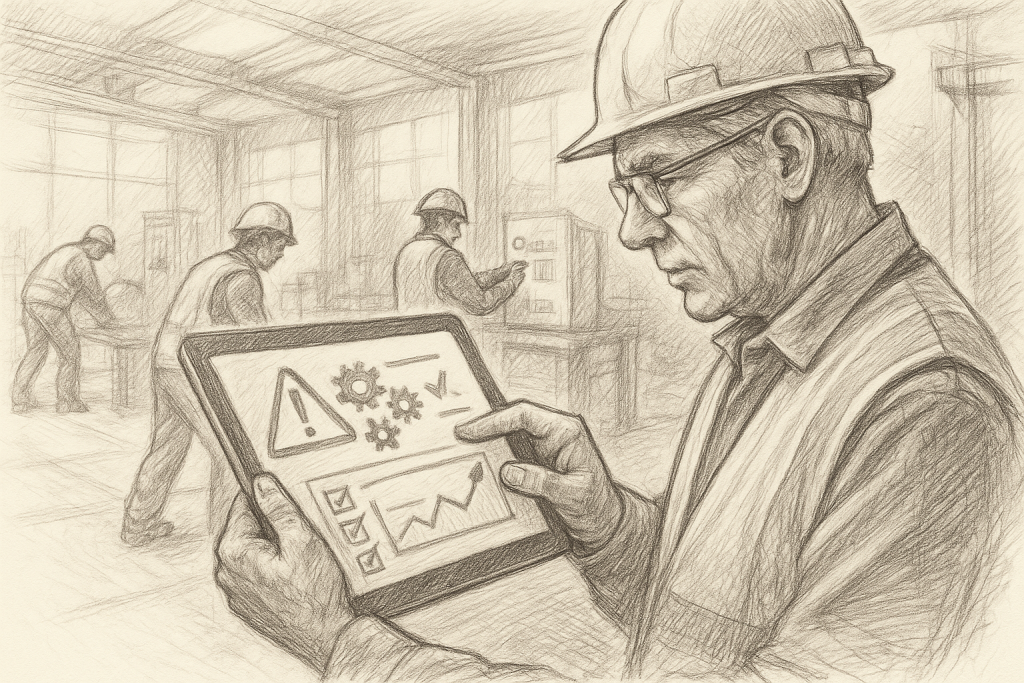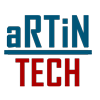From Rules to Routine: What a Safety Culture Means #
A safety culture is more than following regulations — it’s about creating an environment where safe practices are the norm and every employee feels responsible for workplace safety.

Core Elements of a Strong Safety Culture #
Leadership commitment.
Open communication.
Ongoing training.
Employee involvement in safety decisions.
The foundation of a robust safety culture is unwavering leadership commitment. When executives and managers visibly prioritize safety through their actions and resource allocation, it sets a powerful precedent. This commitment is brought to life through active employee involvement, where frontline workers help shape safety policies and identify hazards, giving them true ownership of the process. This collaboration depends on open communication—a psychologically safe atmosphere where anyone can voice concerns. This entire framework is supported by ongoing training, which equips the team with the knowledge to recognize risks and perform their jobs safely.
Building this culture requires practical steps. Leaders must lead by example, consistently modeling the safe behaviors they expect from others. This visible dedication builds the trust necessary to encourage reporting, creating a no-blame system where employees feel comfortable reporting hazards and near-misses, which are invaluable learning opportunities. To reinforce these positive actions, it’s crucial to recognize safe behavior. Publicly acknowledging individuals who demonstrate a strong safety commitment celebrates their efforts and motivates others. Finally, to ensure longevity, integrate safety into onboarding. By making safety a core component from an employee’s first day, new hires understand that it’s an intrinsic part of their role, perpetuating the culture for years to come.
Steps to Build It #
Lead by Example: Managers must consistently follow safety rules.
Encourage Reporting: Remove fear from hazard reporting.
Recognize Safe Behavior: Public acknowledgment builds momentum.
Integrate Safety into Onboarding: Make it part of company DNA.
How do I implement these steps in my workplace? #
1. How to Lead by Example #
This is about making your commitment to safety visible and undeniable.
Be Present and Prepared: Regularly walk through your work areas. When you do, always wear the exact same Personal Protective Equipment (PPE) required for the workers in that area, even for a five-minute visit. This simple act speaks volumes.
Start Every Meeting with a “Safety Moment”: Make safety the first item on the agenda for every meeting, not just operational ones. It can be a brief story, a review of a recent near-miss (without blame), or a tip related to the season, like safe winter driving or hydration in the summer.
Challenge Unsafe Practices Directly: If you see something unsafe, address it immediately and respectfully. Similarly, if you see a production or deadline pressure compromising a safety procedure, you must be the one to say, “We will not proceed until this is done safely.” This proves that safety trumps all other priorities.
2. How to Encourage Reporting #
This is about building psychological safety so employees feel comfortable speaking up.
Establish a Simple, Multi-Channel System: Don’t rely on a single, complicated form. Offer multiple ways to report, such as a physical drop-box, a simple online form, a dedicated email address, or even reporting directly to a supervisor or Joint Health and Safety Committee (JHSC) member. The key is accessibility.
Create a “No-Blame” Reporting Policy: Formally write and communicate a policy that guarantees no retaliation for reporting a hazard, an error, or a near-miss. Emphasize that the goal is to learn from the event and improve the system, not to punish the individual.
Close the Loop: This is the most critical step for building trust. Create a “You Said, We Did” board (physical or digital). When a hazard is reported, post it. Then, post the actions taken to resolve it. If you can’t fix something, explain why. When people see that their reports lead to tangible change, they will continue to report.
3. How to Recognize Safe Behavior #
This shifts the focus from punishment for mistakes to reinforcement of positive actions.
Be Specific and Immediate: Instead of waiting for a formal review, give positive feedback on the spot. Say, “Thanks, Sarah, for cleaning up that spill right away. That prevented a potential slip hazard for everyone.” This immediate, specific praise is highly effective.
Launch a Peer-to-Peer Recognition Program: Create “Safety Champion” cards that employees can give to a colleague they see doing something exceptionally safe. These can be entered into a monthly draw for a small prize like a gift card, a company-branded item, or lunch with a manager.
Celebrate Leading Indicators: Publicly celebrate proactive measures, not just the absence of accidents. Acknowledge teams that have the highest number of reported (and resolved) hazards, the best housekeeping scores, or the most valuable safety suggestions.
4. How to Integrate Safety into Onboarding #
This ensures that safety is understood as a core value from day one.
Make Safety the First Impression: A senior leader—not just an HR or safety officer—should personally welcome new hires on their first day and speak passionately about the company’s commitment to their well-being.
Assign a Safety Mentor: Pair each new employee with an experienced, safety-conscious team member for their first few weeks. This mentor can answer questions and model safe work habits in a low-pressure environment.
Empower Them from the Start: During onboarding, explicitly explain their right and responsibility to refuse unsafe work, as outlined by Ontario’s Occupational Health and Safety Act (OHSA). Give them clear instructions on how to use their “Stop Work Authority” if they ever feel a task is unsafe for themselves or others.
By consistently applying these practical steps, you will move from simply having safety rules to creating a true culture where every employee is an active participant in keeping the workplace safe.
Technology Tip #
Safety culture thrives when processes are supported by tools that make safe choices the easy choice — from mobile reporting apps to automated reminders.
Related Articles #
#WorkplaceSafety #SafetyCulture #EHS #SafetyManagement #EmployeeEngagement




